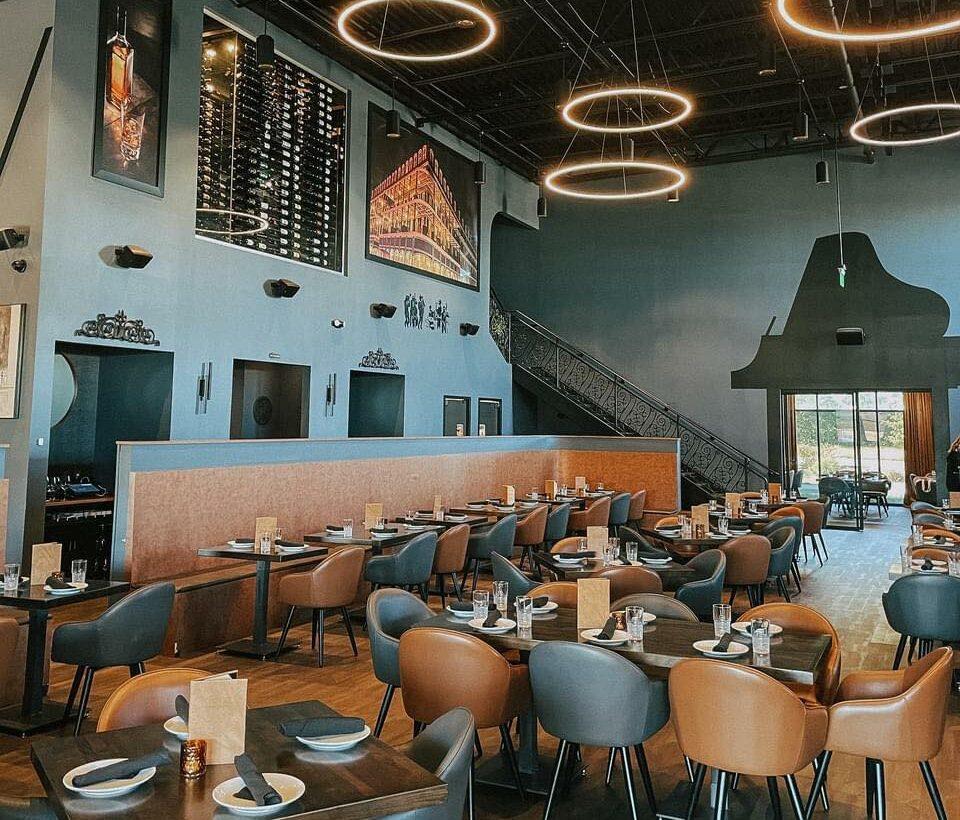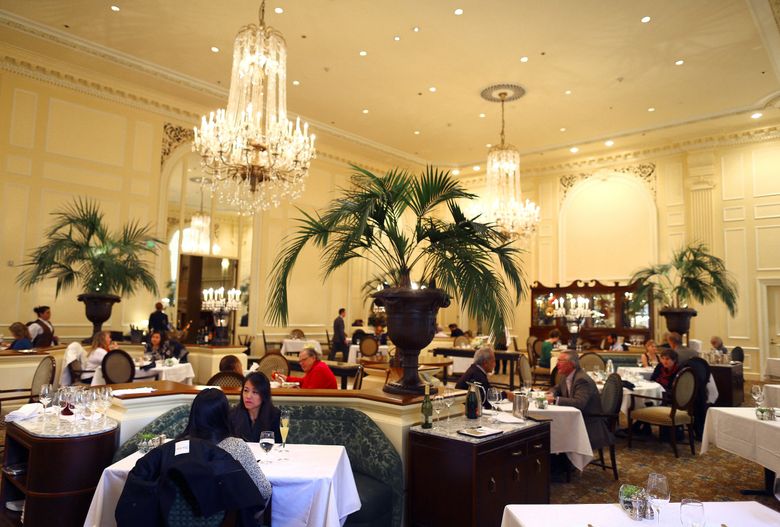Romantic Restaurants Islamabad: Suitable Dining Destinations for Couples
Romantic Restaurants Islamabad: Suitable Dining Destinations for Couples
Blog Article
Savor Genuine Asian Food With a Pan-Asian Twist for a Cooking Experience
Starting a cooking trip with authentic Asian food, improved with a Pan-Asian twist, provides a special chance to explore the rich tapestry of tastes that specify the region's varied cooking customs. This experience invites you to savor the elegant equilibrium of preferences-- wonderful, salty, spicy, and sour-- integrated by fragrant natural herbs and spices. Picture the innovative blend of Thai curry and ramen or the unforeseen delight of sushi burritos. As you ponder these tempting meals, take into consideration the social narratives and historical influences that form them, each bite using a story waiting to be uncovered.

Exploring Pan-Asian Tastes
In the world of worldwide gastronomy, Pan-Asian food stands apart for its remarkable variety and the harmonious interaction of flavors from numerous Asian societies. This culinary approach commemorates the abundant customs and unique ingredients found throughout the continent, creating a tapestry of preferences that is both appealing and gratifying. Key to Pan-Asian food is its capability to balance different tastes-- pleasant, salty, spicy, and sour-- while highlighting the quality and top quality of each component.
From the umami-rich soy sauce of Japan to the fiery chili peppers of Thailand, Pan-Asian cuisine uses a comprehensive palette of flavors. These elements are usually combined in innovative methods, enhancing dishes with layers of intricacy. For example, using fragrant herbs such as lemongrass and cilantro, usual in Vietnamese and Thai cuisine, includes a refreshing brightness to dishes, while the consolidation of coconut milk provides a velvety, rich structure.
The focus on fresh fruit and vegetables and fragrant spices guarantees that each meal is not just a banquet for the taste yet additionally for the senses. Pan-Asian food invites diners to begin on a cooking trip, discovering the vast and varied landscapes of Asian gastronomy with every bite.
Fusion Recipes to Try
While Pan-Asian cuisine is celebrated for its conventional flavors, the modern-day cooking landscape is increasingly accepting combination meals that mix these traditional aspects with influences from various other regions. This ingenious technique not just honors the rich heritage of Eastern cookeries but likewise introduces unique preference experiences that appeal to modern tastes buds.
A prime instance of such a combination dish is the Korean-Mexican taco, where marinated bulgogi beef is wrapped in a cozy tortilla, covered with kimchi and a spicy gochujang-infused salsa. This mix weds the strong, mouthwatering tastes of Korea with the lively, fresh elements of Mexican food. In a similar way, sushi burritos have actually acquired popularity, amalgamating the delicate artistry of Japanese sushi with the passionate, hand-held comfort of a burrito, often featuring fusion ingredients like tempura shrimp and avocado with a drizzle of wasabi mayo.
One more significant recipe is Thai curry ramen, which infuses the creamy, aromatic seasonings of Thai curry into the soothing broth of traditional Japanese ramen, developing an unified mix that entices the detects. These combination meals prolong beyond mere novelty; they stand for a cooking discussion in between societies, urging expedition and technology in the globe of Pan-Asian food.
Vital Active Ingredients and Spices
To genuinely appreciate Pan-Asian cuisine, one have to recognize the vital active ingredients and spices that develop its structure. This diverse culinary style draws from a rich tapestry of Eastern traditions, using an unified blend of flavors and appearances.
Fragrant elements are essential, with lemongrass, ginger, and garlic being ubiquitous throughout different Pan-Asian dishes. These components give a fragrant base that boosts the complexity of tastes. Seasonings such as star anise, cardamom, and cinnamon introduce warmth and character, echoing influences from regions like China and India.

Food Preparation Strategies and Tips
Understanding the art of Pan-Asian cuisine calls for familiarity with its unique food preparation methods, each adding to the lively tapestry of tastes this culinary practice is celebrated for. Central to these methods is the stir-fry, a quick cooking technique that maintains the nutritional stability and vibrant shades of ingredients. Utilizing a frying pan, the stir-fry technique permits also heat distribution, crucial for accomplishing the particular appearance and flavor balance of Pan-Asian meals.
One more essential method is steaming, especially common in Chinese food. This mild technique preserves the all-natural flavors and nutrients of ingredients, making it optimal for seafood and vegetables. Dumplings, a beloved staple, commonly take advantage of steaming, resulting in soft, delicious structures.
Grilling, additionally important, passes on smoky midsts to meals such as Korean bulgogi or Japanese yakitori (Instagrammable restaurants Islamabad). This strategy typically includes marinating active ingredients, allowing tastes to permeate deeply before food preparation over an open fire or hot plate
Last but not least, understanding the art of stabilizing tastes-- wonderful, sour, salty, bitter, and umami-- is critical. Effectively layering these components can elevate a recipe from ordinary to extraordinary, supplying a complex and pleasing culinary experience that embodies the essence of Pan-Asian cuisine.
Dining Experiences Worldwide
Across the world, Pan-Asian food provides an unmatched eating experience, celebrated for its abundant tapestry of flavors and vibrant presentations. This culinary sensation has gone beyond social boundaries, catching the hearts and tastes of food fanatics worldwide. In multicultural cities fresh York, London, and Sydney, Pan-Asian restaurants serve as fusions where cooking traditions from Thailand, Japan, China, and beyond merge, offering restaurants with an eclectic mix of dishes that highlight the area's diversity.
The global appeal of Pan-Asian cuisine hinges on its ability to supply both credibility and development. Chefs skillfully wed traditional ingredients such as lemongrass, soy sauce, and miso with modern strategies, causing recipes that are both refreshingly brand-new and acquainted. This blend permits diners to start a culinary trip that respects heritage while welcoming modernity.
In addition, dining experiences are raised with attentively developed settings that mirror the principles of Pan-Asian aesthetics. From minimalist Japanese-inspired insides to dynamic Thai-themed rooms, each dining establishment uses a special setting that complements the cooking offerings. Because of this, patrons are not just taking in a meal but partaking in a social experience, making Pan-Asian dining a really global phenomenon.
Conclusion
The expedition of Pan-Asian food supplies an extensive understanding of the detailed interaction of flavors and cooking traditions across Asia. By embracing blend meals such as Thai curry ramen and sushi burritos, the cooking journey not just highlights the adaptability of traditional components but additionally showcases ingenious contemporary techniques. This gastronomic adventure, enriched by important spices and cooking methods, provides a asian fusion restaurant distinct chance to appreciate the cultural variety and cooking creativity that define Pan-Asian cuisine on a worldwide scale.
Beginning on a cooking trip via authentic Oriental food, enhanced with a Pan-Asian twist, offers an unique possibility to check out the rich tapestry of tastes that specify the area's varied culinary customs.In the realm of worldwide gastronomy, Pan-Asian cuisine stands out for its remarkable diversity and the harmonious interplay of flavors from various Asian societies. Trick to Pan-Asian cuisine is its ability to balance different tastes-- sweet, salted, spicy, and sour-- while highlighting the quality and high quality of each component.

Report this page